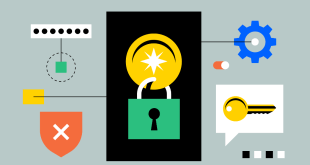Data security has become a paramount concern in the digital age, as cyber threats continue to evolve. Traditional cryptographic methods are facing challenges from the potential threat posed by quantum computers. To combat this, a new era of encryption, known as post-quantum cryptography, is emerging. In this blog, we delve deep into the world of post-quantum cryptography, its significance in data encryption, and how it can protect sensitive information in the face of quantum computing advancements.
Understanding Post-Quantum Cryptography
Post-quantum cryptography, also known as quantum-safe or quantum-resistant cryptography, refers to cryptographic algorithms designed to withstand attacks from quantum computers. Unlike classical computers that use binary bits, quantum computers use quantum bits or qubits, which have the potential to process vast amounts of data simultaneously. This extraordinary computing power could break traditional cryptographic algorithms, rendering sensitive data vulnerable.
The Impending Quantum Threat
Quantum computing poses a significant threat to classical cryptographic methods, such as RSA and ECC (Elliptic Curve Cryptography). Quantum algorithms, like Shor’s algorithm, can factor large numbers exponentially faster, jeopardizing the security of encryption based on factorization and discrete logarithm problems. As quantum technology advances, the need for post-quantum cryptography becomes more urgent.
A Diverse Range of Post-Quantum Algorithms
Post-quantum cryptography offers a diverse array of mathematical problems that are considered hard even for quantum computers to solve efficiently. Some prominent post-quantum algorithms include:
Lattice-based Cryptography
Lattice-based cryptography relies on the hardness of certain problems associated with mathematical lattices. The NTRUEncrypt and NTRUSign algorithms are examples of lattice-based schemes that resist quantum attacks.
Hash-based Cryptography
Hash-based algorithms, like the Merkle tree-based structure of the Lamport-Diffie one-time signature scheme, provide post-quantum security based on the cryptographic hash functions’ collision resistance.
Code-based Cryptography
Code-based cryptography relies on the difficulty of decoding linear codes, and the McEliece cryptosystem is a well-known example of this approach.
Multivariate Quadratic Equations
Multivariate quadratic equations, such as the Rainbow and Unbalanced Oil and Vinegar schemes, offer another avenue for post-quantum encryption.
4. Challenges in Post-Quantum Cryptography
While post-quantum cryptography holds promise, it also faces several challenges:
Key Size and Performance
Many post-quantum algorithms require larger key sizes than traditional ones, which may impact performance and storage requirements. Striking a balance between security and efficiency is a crucial challenge in adopting post-quantum encryption.
Standardization and Interoperability
With various post-quantum algorithms proposed by different researchers, achieving standardization and interoperability is vital to ensure seamless integration and widespread adoption.
Quantum-Safe Migration
Migrating existing systems from classical cryptography to post-quantum cryptography requires careful planning and execution to prevent vulnerabilities during the transition.
5. The Future of Post-Quantum Cryptography
Post-quantum cryptography is still in its nascent stages, and ongoing research aims to improve its efficiency and security. Organizations and governments are investing in post-quantum research to safeguard sensitive data and communication.
Final Words
In a world where quantum computing looms on the horizon, post-quantum cryptography offers a beacon of hope for secure data encryption. Embracing this cutting-edge technology will fortify our digital infrastructure and ensure a safer future for confidential information.
Commonly Asked Questions
Q1: Why is post-quantum cryptography necessary?
Post-quantum cryptography is essential to protect data from potential attacks by quantum computers, which could render traditional encryption methods obsolete.
Q2: How do post-quantum algorithms resist quantum attacks?
Post-quantum algorithms are designed based on mathematical problems that are difficult for quantum computers to solve efficiently, ensuring data security.
Q3: Will post-quantum cryptography slow down data processing?
Some post-quantum algorithms may require larger key sizes, which could impact performance, but ongoing research aims to optimize their efficiency.
Q4: Is post-quantum cryptography widely adopted yet?
Post-quantum cryptography is still in its early stages, but its adoption is gaining traction as awareness of the quantum threat grows.
Q5: What steps can organizations take to prepare for post-quantum encryption?
Organizations should conduct risk assessments, explore post-quantum algorithm options, and plan for a seamless migration to quantum-safe encryption.
 webfily
webfily



